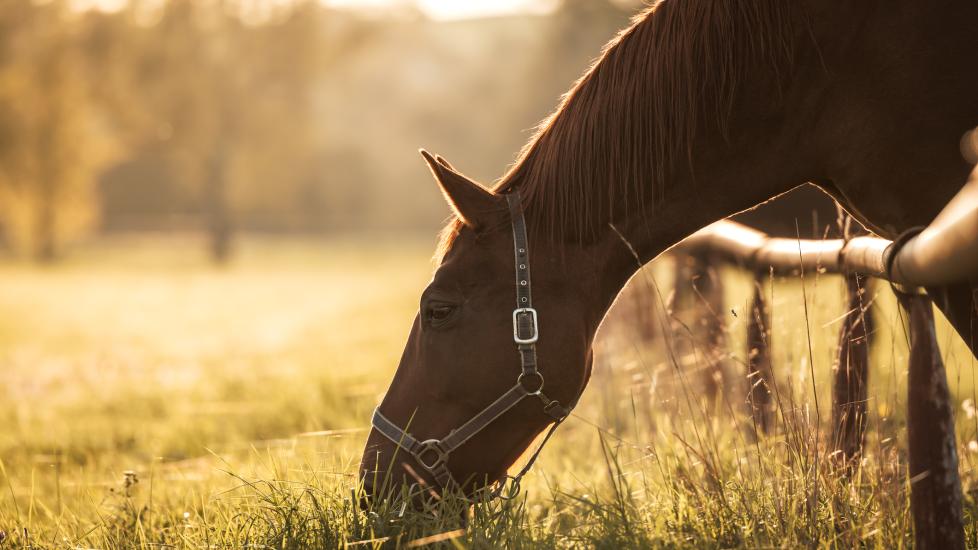Summer Sores in Horses
Zbynek Pospisil/iStock via Getty Images
Summer sores in horses are a common condition that can affect horses of all ages and breeds across many geographic areas.
What Are Summer Sores in Horses?
Summer sores in horses, also called granular dermatitis, are lesions on a horse's skin that are caused by a microscopic parasitic worm (
Summer sores develop when
Types of Habronema Worms in Horses
Three species of Habronema worm are most seen in summer sore lesions:
-H. muscae
-H. microstoma
-H. megastoma
All three worms are carried by flies. These infections typically occur when flies are more active, such as in the spring or summer.
Symptoms of Summer Sores in Horses
Signs of summer sores in horses include:
-
Red, raised lesions similar to proud flesh (excessive granulation tissue) that don’t heal
-
Yellow or white granular material within the lesions
-
Blood tinged or clear discharge from the lesion
-
Itchiness
Causes of Summer Sores on Horses
Habronema worms are parasites that use the horse’s gastrointestinal tract for part of their normal life cycle.
Flies ingest the Habronema eggs from horse feces. The eggs hatch into larvae within the flies and the flies deposit the larvae around the horse's mouth. The horse swallows the larvae, which then turn into adults in the horse’s stomach. Once there, the adult Habronema worms lay more eggs that are passed through the horse via their feces and the life cycle starts all over again.
Summer sores in horses occur when this life cycle is broken. Instead of depositing the larvae near the horse’s mouth, flies land near already open wounds or moist areas on the horse’s body and deposit the Habronema there instead.
Wounds are not the right environment for Habronema larvae to develop to adults, so they will stay in the wound and cause local inflammation and swelling.
How Veterinarians Diagnose Summer Sores in Horses
Summer sores in horses are typically diagnosed by their characteristic appearance and non-healing nature. Often, summer sores in horses are presented to a veterinarian after an owner has already attempted routine wound healing treatments (such as bandaging or antibiotic ointment) and there has been no improvement.
At this point, it is common for veterinarians to recommend diagnosis by response to treatment, namely deworming. In some severe or poorly responsive cases,
Treatment of Summer Sores in Horses
The mainstay of treatment for summer sores in horses is deworming, such as with ivermectin or moxidectin.
Horses with summer sores can often require multiple treatments. These deworming agents can also be used topically (applied directly on the lesion) to maximize the dose impact on the larvae within the wound.
Anti-inflammatories such as
In very severe cases, debridement (surgical removal) of the proud flesh caused by the Habronema is necessary to jump-start the healing process.
Recovery and Management of Summer Sores in Horses
Help prevent summer sores in horses by limiting flies from landing on your horse’s skin. It is recommended to use:
-
Fly mitigation protocols
Additionally, early identification of wounds and keeping them clean and covered can help prevent infection with Habronema.
Unfortunately, due to the nature of most horses’ lifestyles, summer sores are not avoidable even on the best-managed farms.
Once a horse has become infected with a summer sore, they are often predisposed to summer sores in subsequent years. This makes routine deworming with ivermectin and moxidectin products key to long-term management of these horses.
Summer Sores in Horses FAQs
Are summer sores on horses contagious?
No, summer sores are not directly contagious from one horse to another or to people. They require the right circumstances of flies carrying Habronema larvae and open wounds to
What is the best dewormer for summer sores in horses?
Products containing ivermectin and moxidectin are currently the most effective dewormers for treatment of summer sores.
Are summer sores painful?
In most cases, summer sores in horses are more of an itch, rather than a source of pain for the horse.
Where do horses get summer sores?
Horses get summer sores on locations of wounds and moist areas where Habronema larvae can migrate into the skin and cause inflammation.
